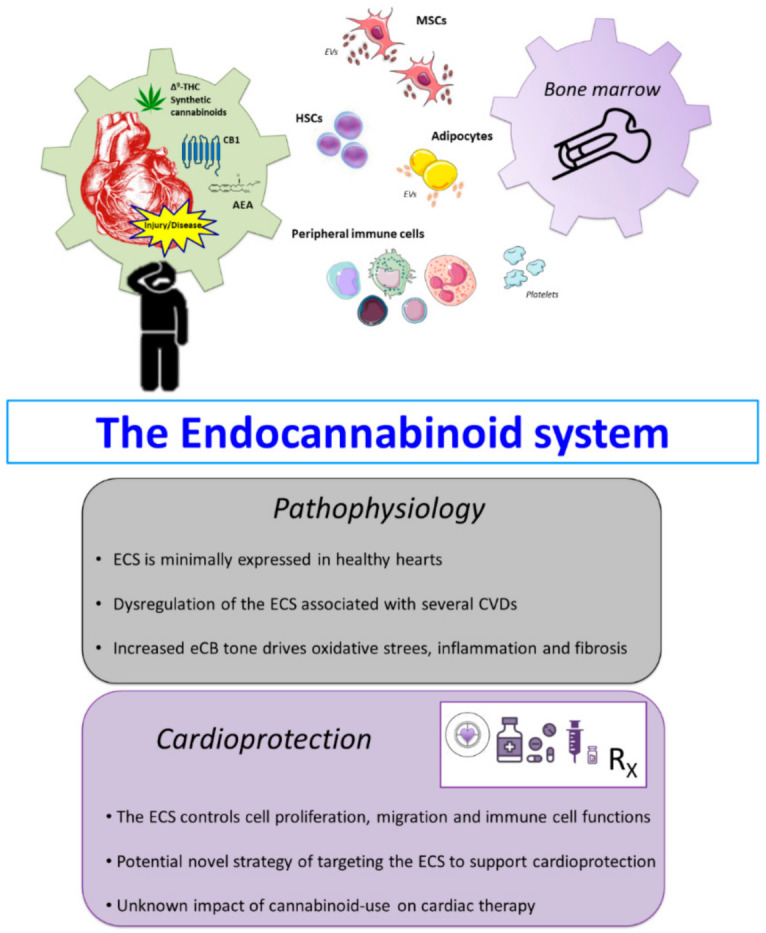Figure 2.

Contribution of the endocannabinoid system (ECS) to cardiovascular pathophysiology and cardioprotection. Schematic representation of the known interaction between the ECS and the bone marrow niche, immune cells, and other cells or cellular cargo that mediate pathophysiological mechanisms in CVDs, e.g., mesenchymal stem cells (MSCs), haematopoietic stem cells (HSCs), adipocytes, and extracellular vesicles (EVs). Comprehensive understanding of the dynamic alterations in the ECS during damage to the myocardium represents a crucial point to establish novel cannabinoid-based therapeutic approaches. For instance, during injury or pathological conditions the ECS becomes dysfunctional and loses specificity of activity that can further drive pathological events. Alterations including increased CB1 expression and anandamide (AEA) during these states activate various molecular signalling such as inflammation and fibrotic signalling. Thus targeting the ECS by inhibiting or enhancing relevant components, e.g., receptors, eCB metabolism etc., could be of potential benefit to improve current and future treatment strategies aimed at cardioprotection.
